It's taken me some time to wrap my head around fragments, but this should be my last question on fragments, since I think I just about have them down. I know this is a huge mess of code to go through. But I'd appreciate the help, to make sure I'm not breaking any fundamental rules with fragments.
I am going to post all of my code just to see if someone can "look over it" to see if I'm making any major mistakes or if I should go a simpler route. Lastly, as stated in the title, my fragment is NOT being replaced... it'd being added on top.
File Tree:

MainActivity.java:
package com.example.learn.fragments;
import android.app.Activity;
import android.os.Bundle;
import android.support.v4.app.Fragment;
import android.support.v4.app.FragmentActivity;
import android.support.v4.app.FragmentManager;
import android.support.v4.app.FragmentTransaction;
import android.view.LayoutInflater;
import android.view.Menu;
import android.view.View;
import android.view.ViewGroup;
public class MainActivity extends FragmentActivity{
@Override
public void onCreate(Bundle savedInstanceState) {
super.onCreate(savedInstanceState);
setContentView(R.layout.activity_main);
}
@Override
public boolean onCreateOptionsMenu(Menu menu) {
getMenuInflater().inflate(R.menu.activity_main, menu);
return true;
}
/* Add a class to handle fragment */
public static class SSFFragment extends Fragment {
@Override
public View onCreateView(LayoutInflater inflater, ViewGroup container,
Bundle savedInstanceState) {
// Inflate the layout for this fragment
View v = inflater.inflate(R.layout.choose_pill_frag, container,
false);
return v;
}
}
public void red(View view) {
// Create new fragment and transaction
ExampleFragments newFragment = new ExampleFragments();
android.support.v4.app.FragmentTransaction transaction = getSupportFragmentManager().beginTransaction();
// Replace whatever is in the fragment_container view with this fragment,
// and add the transaction to the back stack
transaction.replace(R.id.frag, newFragment);
transaction.addToBackStack(null);
// Commit the transaction
transaction.commit();
}
public void blue(View view) {
//Figure out code for "red" first
}
}
ExampleFragments.java:
package com.example.learn.fragments;
import android.os.Bundle;
import android.support.v4.app.Fragment;
import android.view.LayoutInflater;
import android.view.View;
import android.view.ViewGroup;
public class ExampleFragments extends Fragment {
@Override
public View onCreateView(LayoutInflater inflater, ViewGroup container,
Bundle savedInstanceState) {
// Inflate the layout for this fragment
return inflater.inflate(R.layout.red_pill_frag, container, false);
}
}
ActivityMain.xml:
<RelativeLayout xmlns:android="http://schemas.android.com/apk/res/android"
xmlns:tools="http://schemas.android.com/tools"
android:layout_width="match_parent"
android:layout_height="match_parent" >
<fragment
android:id="@+id/frag"
android:layout_width="match_parent"
android:layout_height="match_parent"
class="com.example.learn.fragments.MainActivity$SSFFragment" />
</RelativeLayout>
choose_pill_frag.xml
<RelativeLayout xmlns:android="http://schemas.android.com/apk/res/android"
xmlns:tools="http://schemas.android.com/tools"
android:layout_width="match_parent"
android:layout_height="match_parent" >
<ImageButton
android:id="@+id/imageButton1"
android:layout_width="wrap_content"
android:layout_height="wrap_content"
android:layout_alignParentLeft="true"
android:layout_alignParentTop="true"
android:onClick="blue"
android:src="@drawable/blue" />
<ImageButton
android:id="@+id/imageButton2"
android:layout_width="wrap_content"
android:layout_height="wrap_content"
android:layout_alignParentRight="true"
android:layout_alignParentTop="true"
android:onClick="red"
android:src="@drawable/red" />
</RelativeLayout>
red_pill_frag.xml
<RelativeLayout xmlns:android="http://schemas.android.com/apk/res/android"
xmlns:tools="http://schemas.android.com/tools"
android:layout_width="match_parent"
android:layout_height="match_parent" >
<TextView
android:id="@+id/textView1"
android:layout_width="wrap_content"
android:layout_height="wrap_content"
android:layout_alignParentTop="true"
android:layout_centerHorizontal="true"
android:text="You stay in Wonderland and I show you how deep the rabbit-hole goes."
android:textAppearance="?android:attr/textAppearanceLarge" />
</RelativeLayout>
The application should show two buttons. The two buttons exist in a single fragment, and then if you hit a button, the fragment gets replaced with a new fragment that shows the proper text. As of right now, it should replace, but it only seems to add it on top.